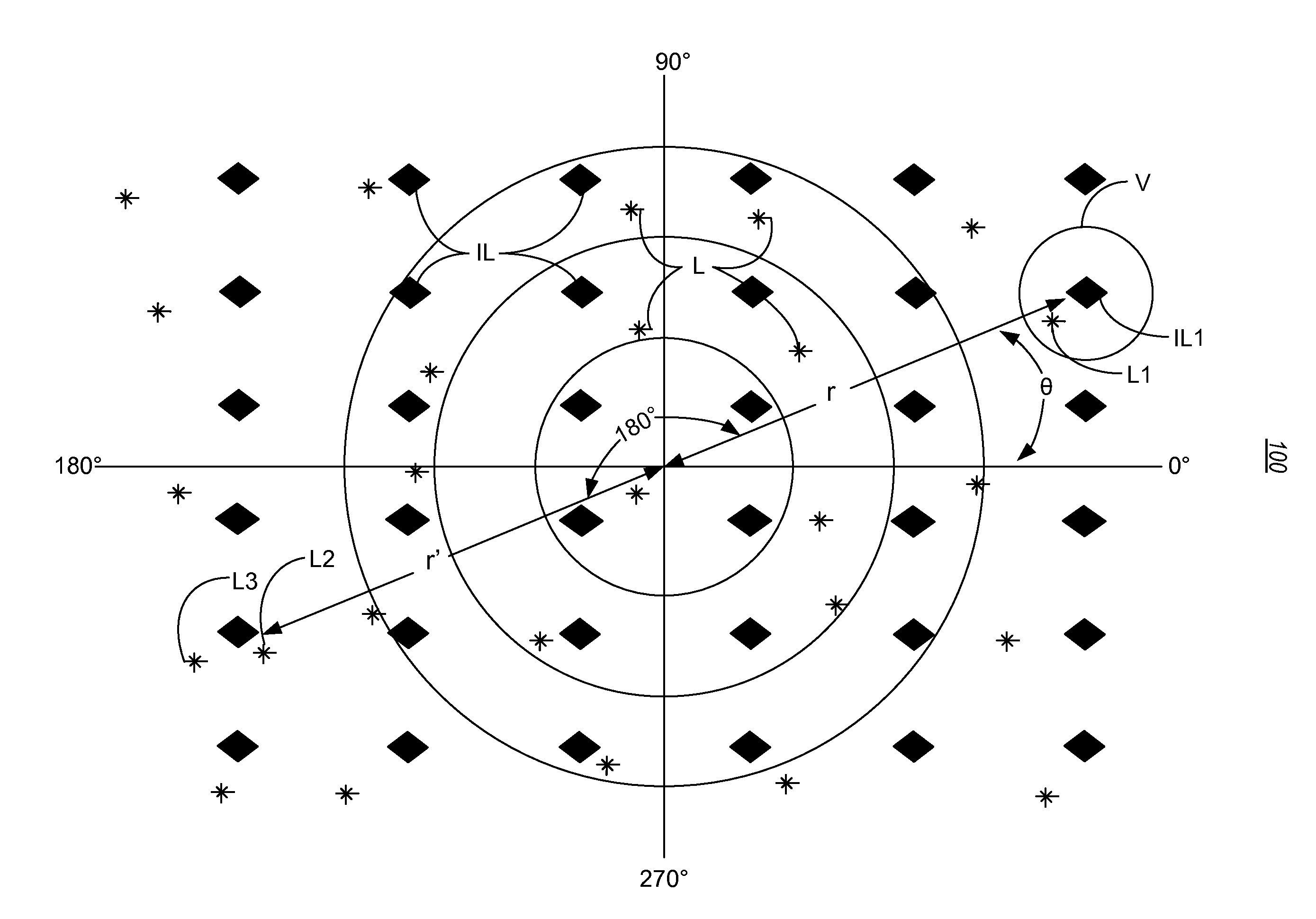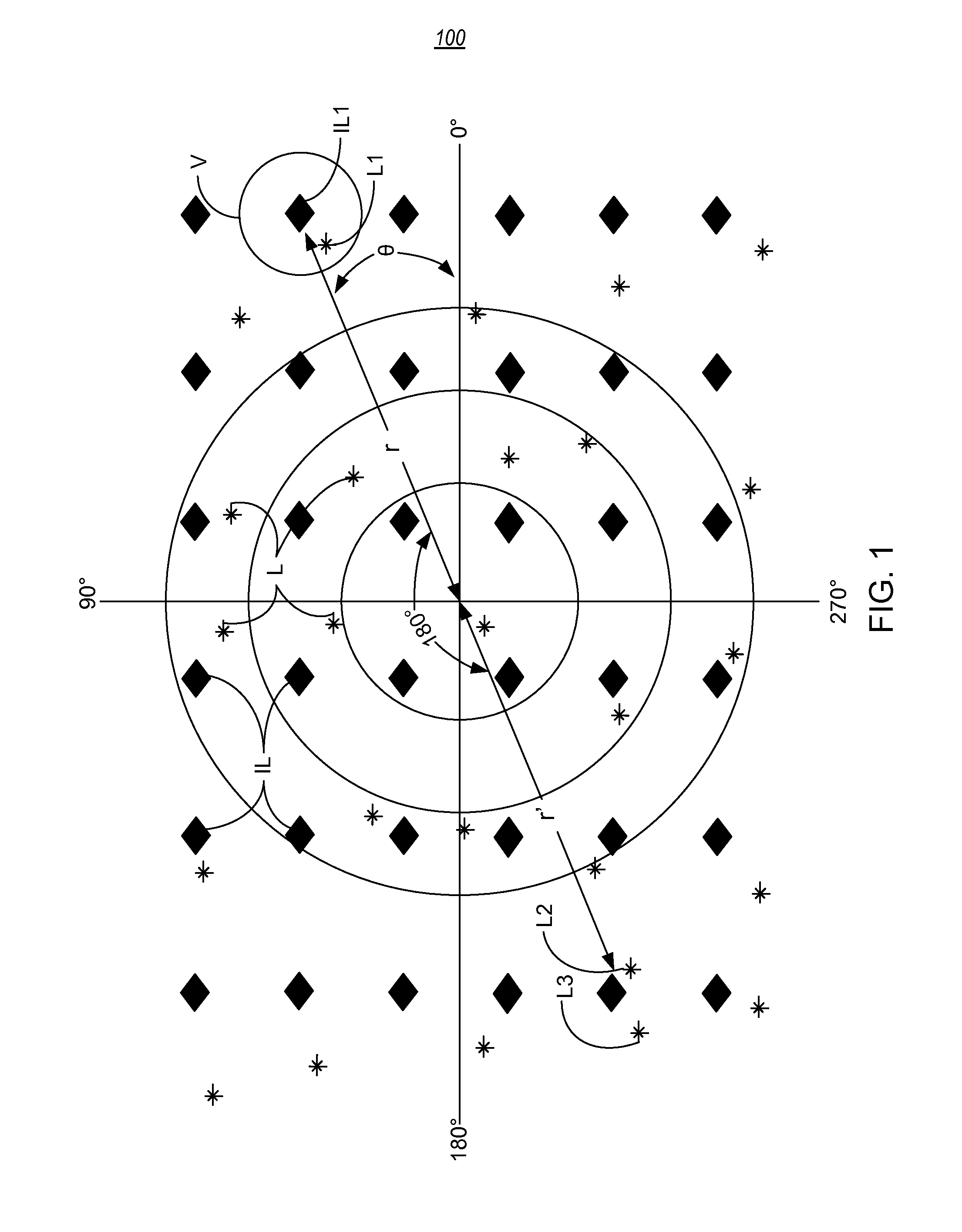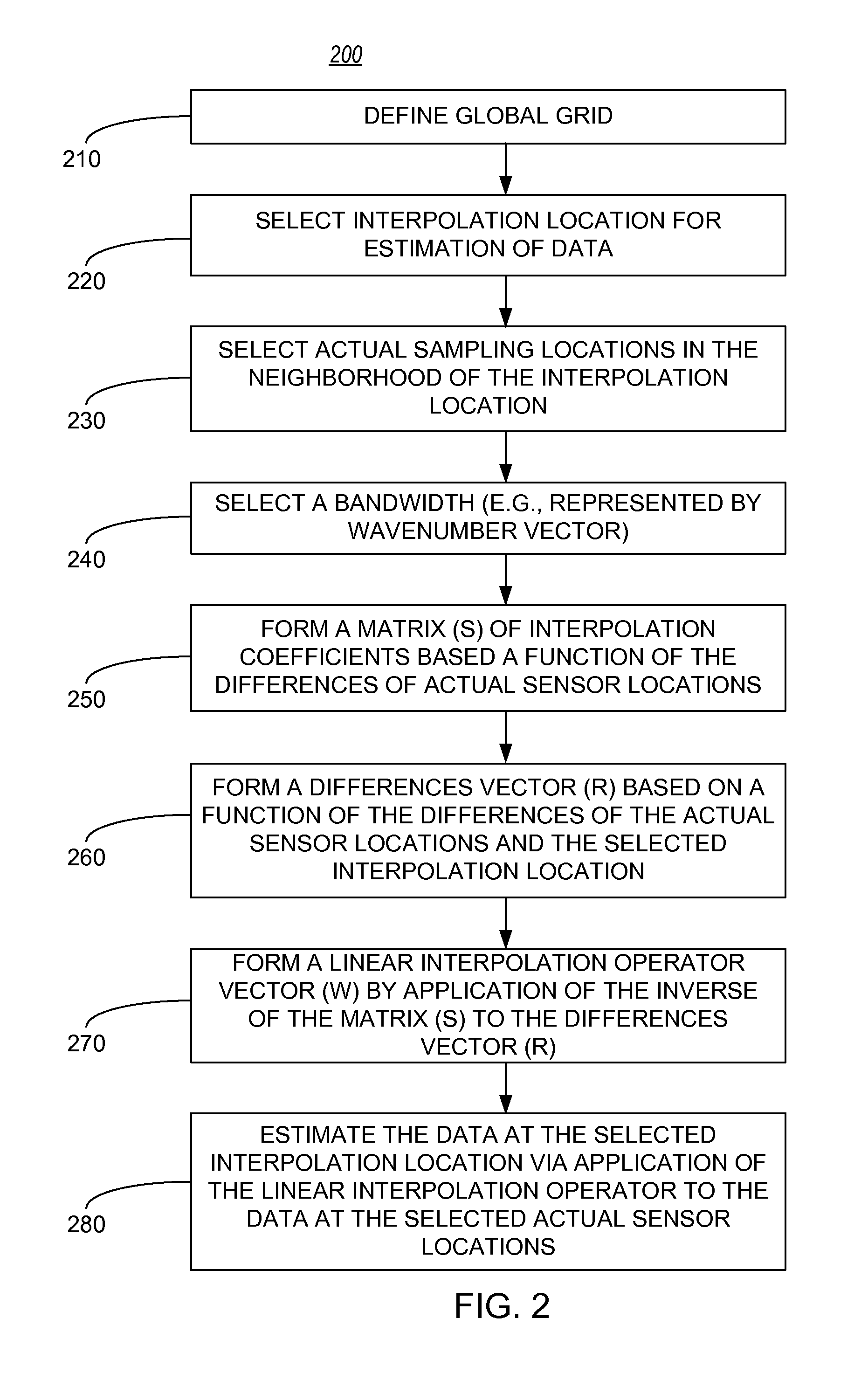Interpolation of periodic data
a periodic data and interpolation technology, applied in the field of data processing, can solve problems such as irregular spacing of data, inaccurate or distorted signal processing algorithms, and sensor or receiver placement not being placed at the planned first location
- Summary
- Abstract
- Description
- Claims
- Application Information
AI Technical Summary
Benefits of technology
Problems solved by technology
Method used
Image
Examples
Embodiment Construction
[0020]The discussion below is directed to certain specific implementations. It is to be understood that the discussion below is only for the purpose of enabling a person with ordinary skill in the art to make and use any subject matter defined now or later by the patent “claims” found in any issued patent herein.
[0021]K. Hendriks and A. J. W. Duijndam proposed the use of least-squares estimation of the Fourier components for data construction in “Reconstruction of 3-D Seismic Signals Irregularly Sampled Along Two Spatial Coordinates,” Geophysics 56, (2000) pp. 253-263. Their proposal consisted of a transformation of the actual data into the wave number domain, and correcting there for distortions due to the irregular sampling. The reconstruction of the data in the space domain is then achieved by an inverse Fourier transform onto a Cartesian spatial sampling grid.
[0022]Furthermore, D. Rosenfeld proposed the rBURS (Block Uniform Re-Sampling) enhanced gridding technique used to interp...
PUM
 Login to View More
Login to View More Abstract
Description
Claims
Application Information
 Login to View More
Login to View More - R&D
- Intellectual Property
- Life Sciences
- Materials
- Tech Scout
- Unparalleled Data Quality
- Higher Quality Content
- 60% Fewer Hallucinations
Browse by: Latest US Patents, China's latest patents, Technical Efficacy Thesaurus, Application Domain, Technology Topic, Popular Technical Reports.
© 2025 PatSnap. All rights reserved.Legal|Privacy policy|Modern Slavery Act Transparency Statement|Sitemap|About US| Contact US: help@patsnap.com



